Helmsley Castle
OS grid reference:-
Medieval Helmsley Castle overlooks the picturesque market town of Helmsley, in the North York Moors National Park.
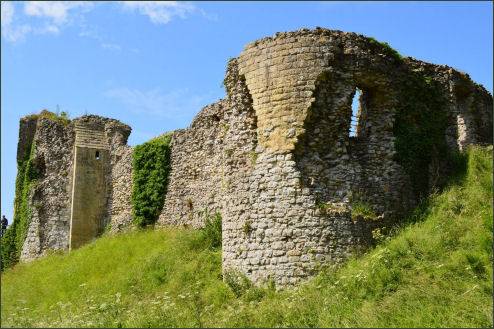
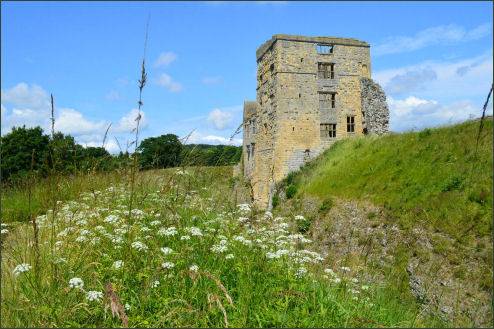
The castle was first constructed of timber in around 1120 by Walter l'Espec, who was also responsible for the founding of nearby Rievaulx Abbey. Walter left no children and accordingly on his death in 1154 the castle passed to his sister Adelina who was married to Peter de Roos. The castle was rebuilt in stone in 1186 by Robert de Ros, who built the two main towers, the round corner towers and the main gateway. On his death in 1227, the castle was inherited by his son William de Roos who built the chapel in the courtyard.
William's son, Robert raised the east tower and built the new hall and kitchen. He added a wall dividing the castle into north and south sides, with the southern half for the private use of the lord's family in the new hall and east tower and They converted the central block into a .suite of rooms featuring ornate plasterwork and panelling, much of which is still in place. The northern half of the castle containing the old hall was used by the steward and other castle officials.
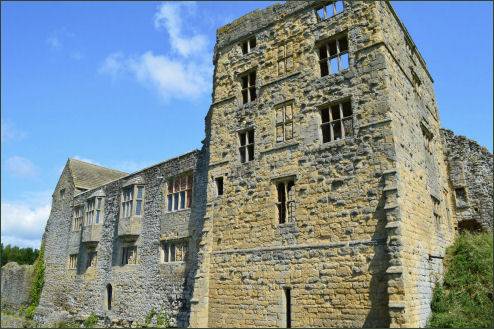
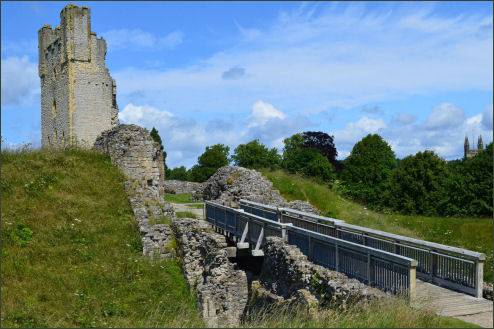
The de Roos family retained Helmsley Castle until 1478, when it was sold by Edmund de Roos Richard, Duke of Gloucester who was later to became Richard III. After Richard's untimely death at the Battle of Bosworth Field, his successor, King Henry VII restored to Helmesley to Edmund de Roos.
Edmund de Roos died without an heir in 1508 and Helmsley Castle therefore passed to his cousin Sir George Manners of Etal. His son Thomas was created Earl of Rutland in 1525. Thomas' grandson grandson Edward converted the medieval the old hall into a Tudor mansion and the thirteenth century chapel into a kitchen linked to the old hall by a covered gallery. The south barbican was converted into a more comfortable residence. On Edward's death in 1587 his estates were inherited by his brother John Manners.. On the death of Francis Manners in 1632 the castle passed to his son-in-law, George Villiers, 1st Duke of Buckingham.
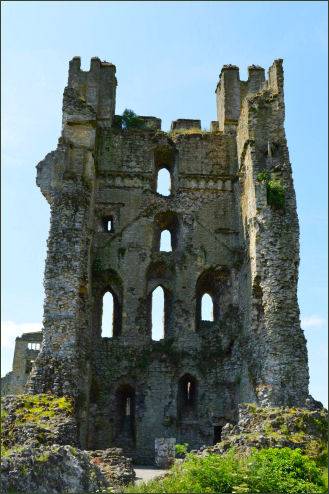
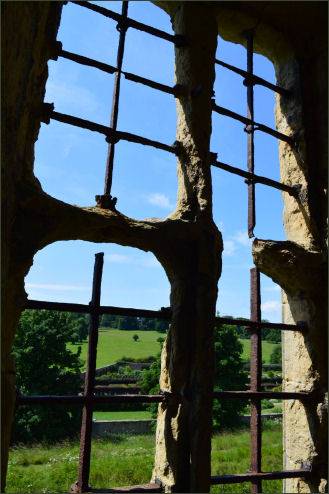
During the Civil War, Buckingham supported the Royalist cause and Helmsley Castle was besieged by Sir Thomas Fairfax in 1644. Sir Jordan Crosland held it for the king for three months before surrendering. The massive ditches and eathworks which completely surround the castle made it difficult to attack. The castle was finally taken by starving out the inhabitants. Parliament ordered the castle to be slighted, it was made indefensible by demolishing parts of the curtain walls and blowing up the East Tower. The remains of the destroyed tower can still be seen laying in the ditch next to the tower, the mansion, however was spared.
The castle had by this time been inherited by George Villiers, 2nd Duke of Buckingham who married Mary, daughter of Thomas Fairfax in 1657. After his death in 1687 the castle was sold to Charles Duncombe, a banker and politician who was knighted in 1699 and became Lord Mayor of London in 1708. His sister Mary's husband, Thomas Brown, inherited the castle on Charles's death in 1711. Thomas changed his name to Duncombe. He hired John Vanbrugh to build a country house at Duncombe Park overlooking the castle and left the castle to fall into ruins.
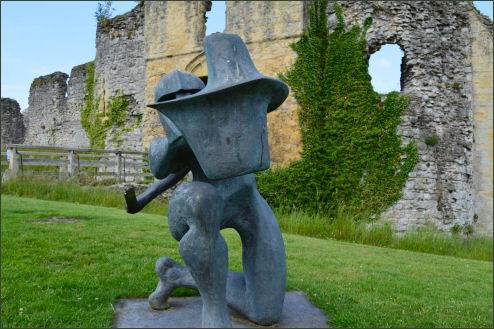
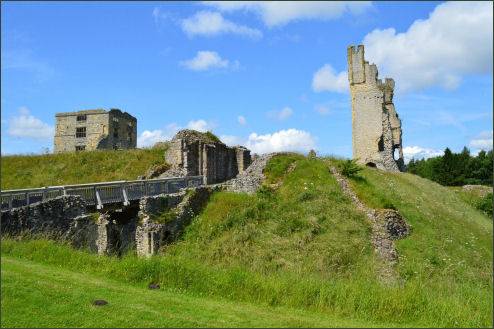
Although it is still owned by the Feversham family of Duncombe Park, the castle is now in the care of English Heritage. The Cleveland Way National Trail passes near the castle and leads on to Rievaulx Abbey, which lies around 4 miles away.
Images courtesy of Paul Johnson
Directions
Near the town centre of Helmsley.
Sat Nav -Postcode: YO62 5AB Latitude: 54.245443 Longitude: -1.0638
Parking -Large pay and display car park 20 metres from entrance. Meters accept coins and cards. Additional parking available in Helmsley market place.
Historic Buildings of Yorkshire
